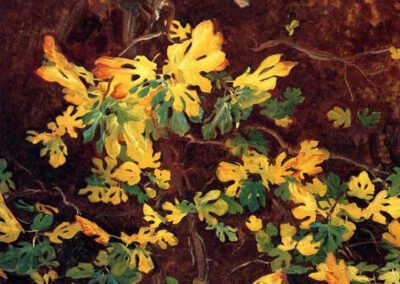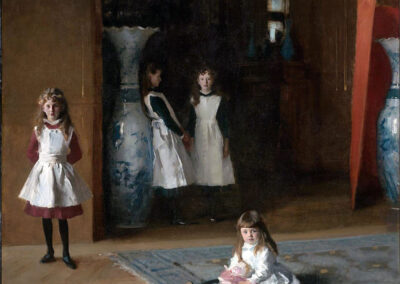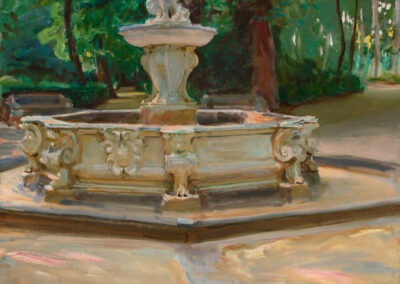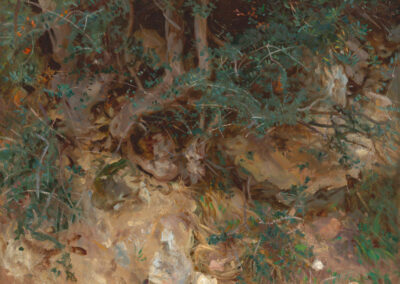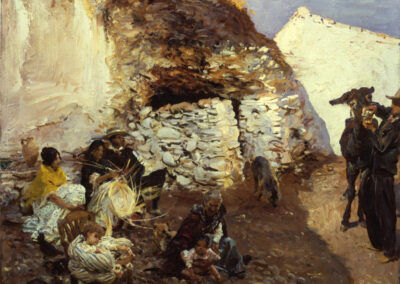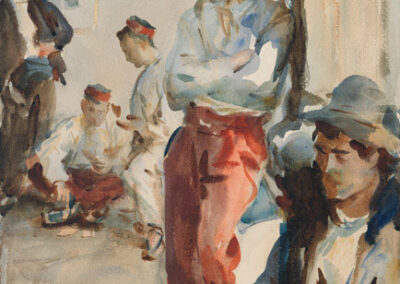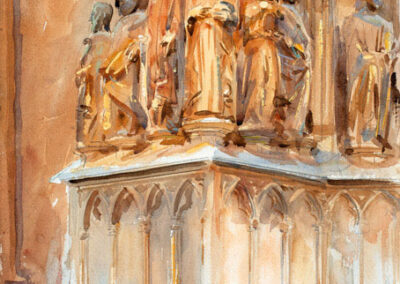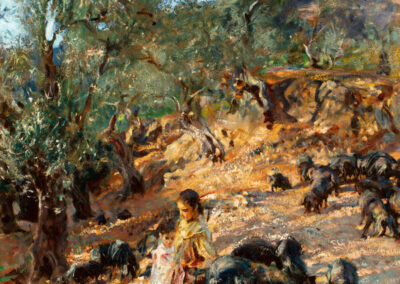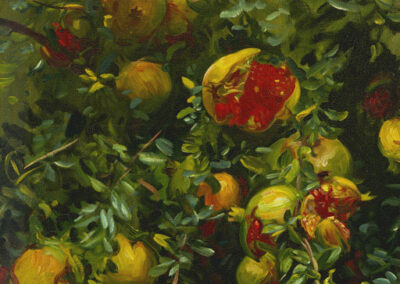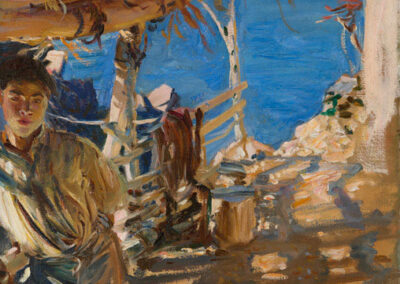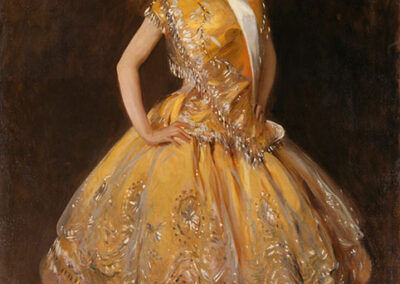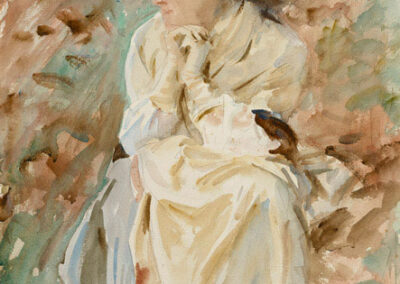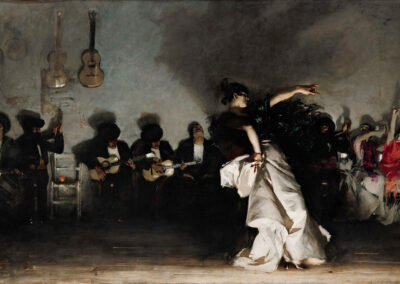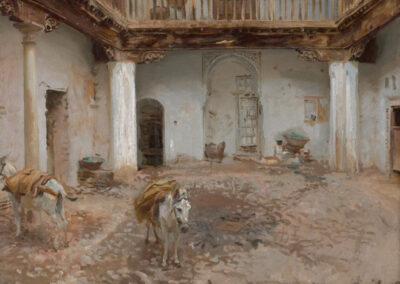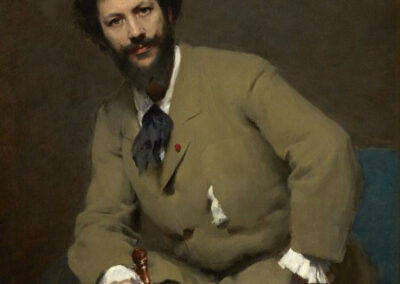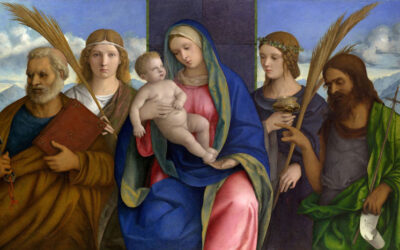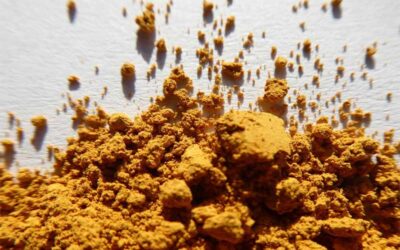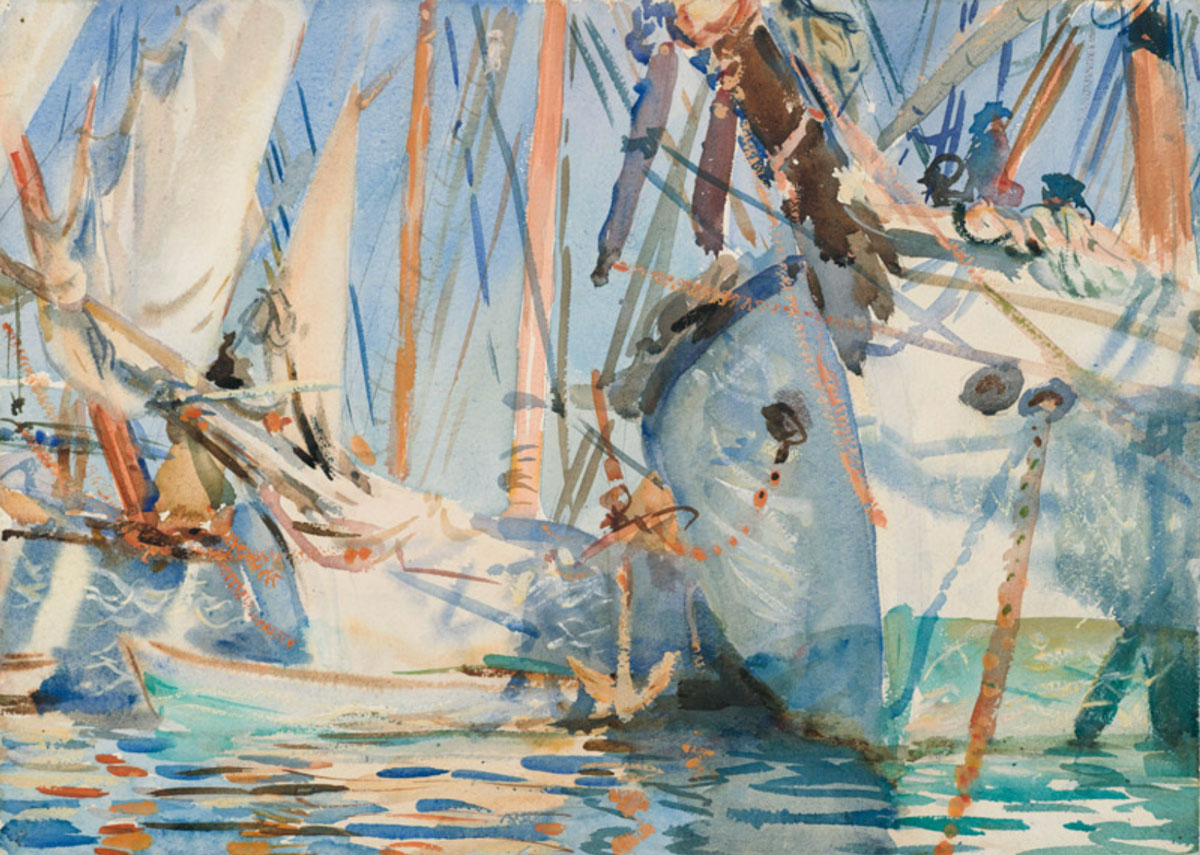
“White Ships”, John Singer Sargent 1908, watercolor over graphite, with gouache and wax resist, Brooklyn Museum, National Gallery of Art
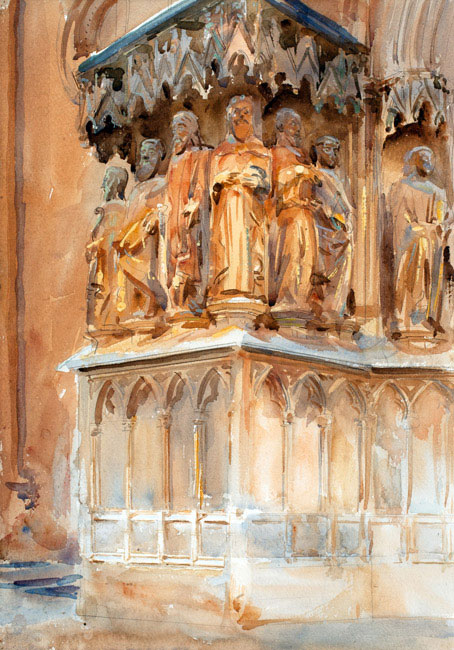
“Tarragona”, c. 1908, watercolor over graphite with gouache. New Britain Museum of American Art, National Gallery of Art
Sargent and Spain: National Gallery of Art, Washington D.C.
Artists located on the East Coast of America have been telling us about a stellar exhibition the National Gallery of Art in Washington, DC: Sargent and Spain. This show comprised around 120 oil paintings, watercolors, and drawings providing satisfaction for every Sargent aficionado. It even included 28 photographs which the Washingtron museum has speculated that some of them were taken by Sargent himself. The works span from 1856 – 1925 and they include Sargent’s paintings of figures, architecture, and scenes of everyday life.
Separate from his portrait commissions, many of his most loved works were painted from his journeys around Europe and North Africa. Being a frequent traveler, arguably his genius was the ability to capture the light of the latitude where he painted. In this collection, you can see that particularly strong and warm Spanish light. It’s similar to the southern European light we encounter in Provence and Tuscany. The take-away from this show is that the inspiration and invigoration that comes from travel can ignite any artist and when you are Sargent, the world will look upon these pieces for generations to come.
Sargent’s Education
As a child, John Singer Sargent was one of those fortunate people who was encouraged to paint by his parents. His mother was an artist and taught him to draw.
Although both of his parents were American, John Singer Sargent was born in Florence. The family would travel almost nomadically around Europe. In 1874, at the age of 18, Sargent studied at the Carolus-Duran atelier in Paris where alla prima work (done in a direct painting style) was prioritized and he gained the painting skills that would make him a highly sought-after portraiture artist.
Rather than spending years toiling over technically perfect and highly rendered drawings in the classical style, Carolus-Duran’s pupils began painting as soon as they started at his atelier. Under Duran’s tutelage, Sargent studied the Spanish masters and made master copies of Velasquez and Goya. His talent was obvious and his fluidity of brushwork emerged which made his work recognizable and became his signature style. These alla prima skills served him well in both portraiture and his landscapes painted en plein air (French for in the open air) during his travels.
His famous portrait of his teacher Carolus-Duran won acclaim when it was shown in the prestigious Paris Salon five years later. The painting seen here displays Sargent’s mastery of light, shadow, and forms. These skills would inform and strengthen his work en plein air.
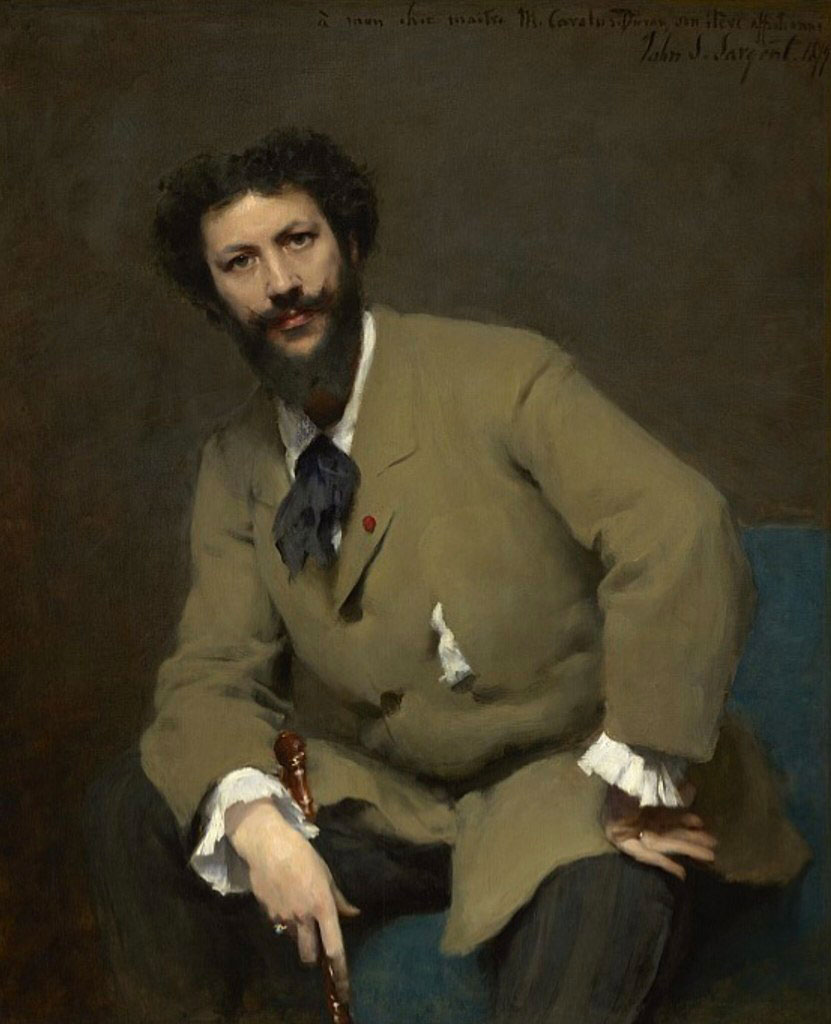
“Portrait of Carolus-Duran”, John Singer Sargent c. 1879, Oil
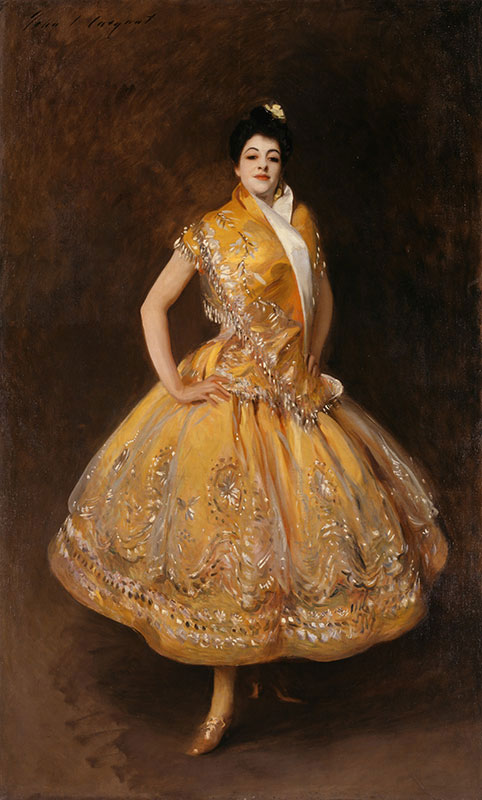
Left: “Carmencita”, John Singer Sargent, 1890, oil on canvas, Musée d’Orsay
Sargent’s Travels
Sargent was famous during his lifetime as a premier portrait painter in oils but as his career continued, his love for watercolor became more and more apparent. He met Monet in 1876, started winning awards, and gained commission after commission. But as he began to focus on his career, Sargent traveled to study masters and find inspiration for paintings.
He traveled to Spain and southern Europe and followed the sunshine that cast the beautiful shapes and shadows that are so familiar in his work. Sargent didn’t just visit Spain once, he returned multiple times throughout his life: his first trip was in 1879 when he was just 23, and he returned six more times over the next 33 years.
He traveled around the north and south of Spain and even visited the island of Mallorca, and in doing so he used various modes of transport, including boats, trains and even donkeys!
As a young man, Sargent had been encouraged by his teacher, Carolus-Duran to study Velázquez so he went to the Prado to do just that. He viewed architecture and gardens and was fascinated by Spanish dance and music, as seen in his paintings of the famous dancer La Carmencita and in the stunning work, “El Jaleo”.
His work was influential in the United States where many Spanish artworks entered private collections.
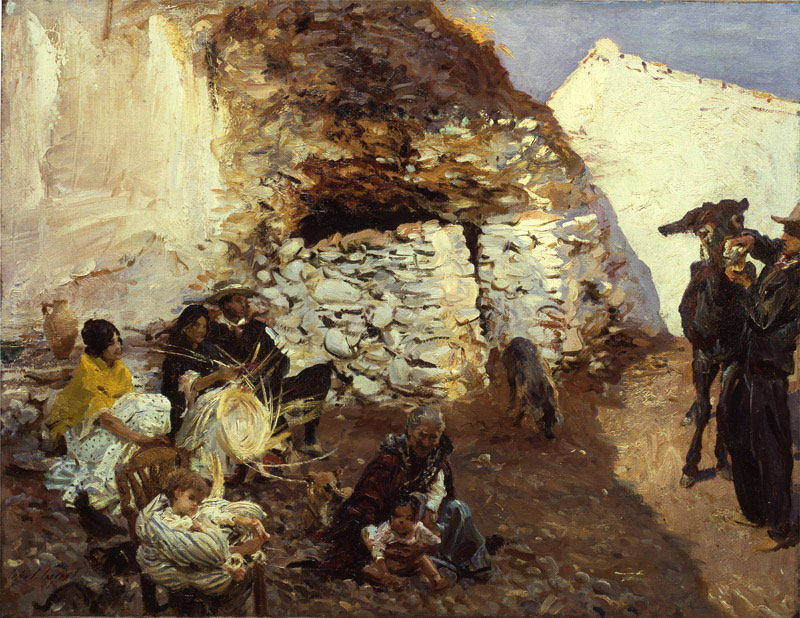
“Spanish Roma Dwelling”, John Singer Sargent, 1912, oil on canvas, Addison Gallery of American Art, Massachusetts
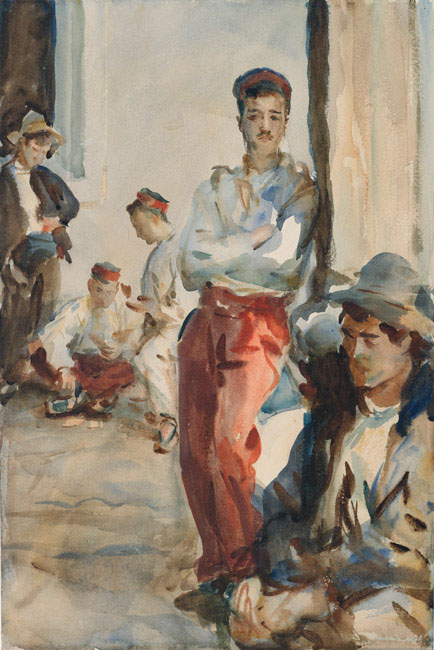
“Spanish Soldiers”, John Singer Sargent, c. 1903, watercolor over graphite, with gouache, Brooklyn Museum
Capturing the Light
If we can take a moment and set aside Sargent’s seemingly endless number of portrait paintings and focus on his other work, there is one thing that stands out: the quality of the light. Without a doubt Sargent had mastered his expressive brush strokes and could capture the subtle temperature differences and shapes of the light and shadow passing through a scene.
As we travel to similar parts of the world, southern France and Tuscany the Workshops in France team has become familiar with this rich, bright, light that graces the fertile land of the region. Capturing this sense of light is without a doubt the goal of plein air artists everywhere. We are delighted to be able to view such an exhibition that focuses on a singular location. It is a wonderful opportunity to examine and delve into the fine work of Sargent’s everyday scenes.
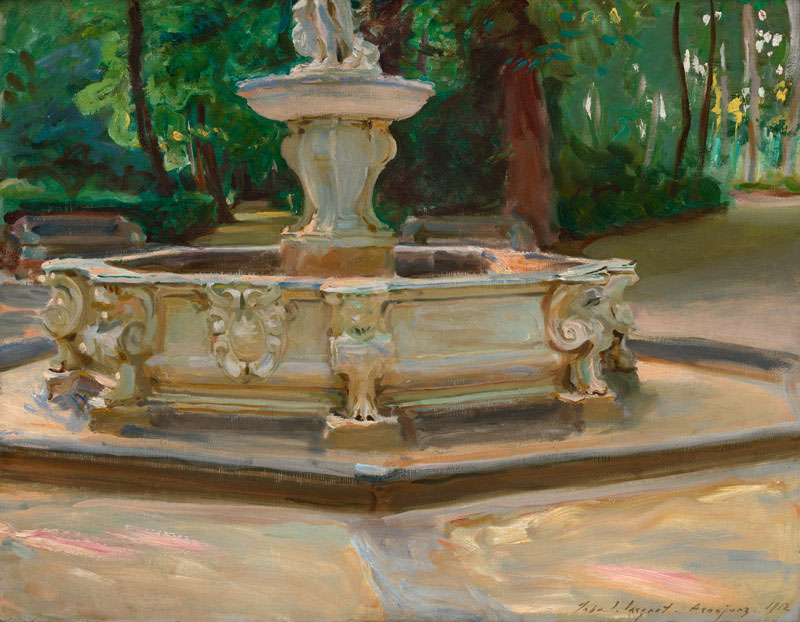
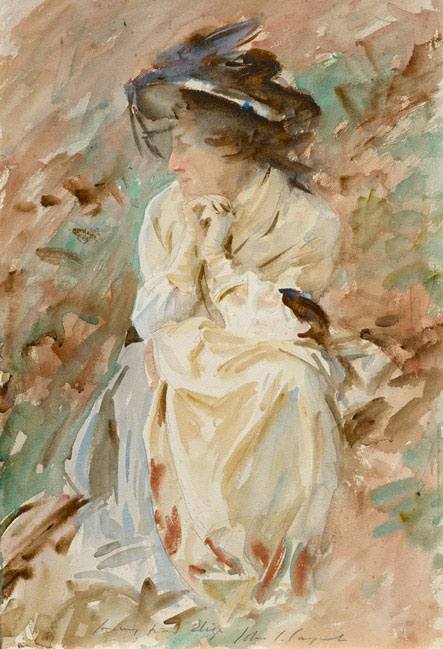
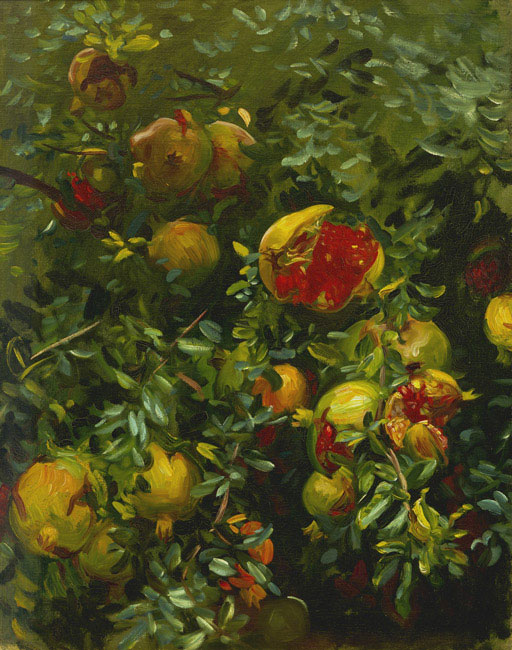
“Pomegranates, Majorca”, 1908, oil on canvas
En Plein Air
In this exhibition, you follow Sargent’s travels through many towns and villages in Spain and witness the full, loose, and lively brushwork he uses to capture the scene. The textures of his work can only be fully appreciated in person. In photographs, his work simply looks impeccable, but in person, you can see the daring and almost reckless marks that are piled up upon the canvas.
When we travel to Tuscany and southern France this upcoming year, we hope we can follow his artistic example, and increase our chances of success by studying this prolific artist.
There is a section of the show that is dedicated to flora and fauna. On display are fig trees, pomegranates, and gourds. Similar to Spain, in Provence and Tuscany we come across fruit trees in season. We even painted ripe apples in Scotland with Quang Ho on the grounds of a castle. Seeing these works handled by Sargent with such attention to pattern, light and shadow is a treat.
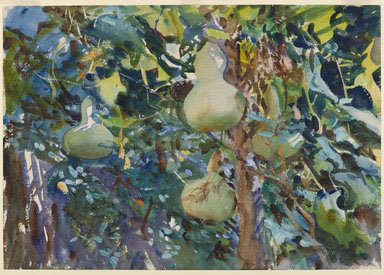
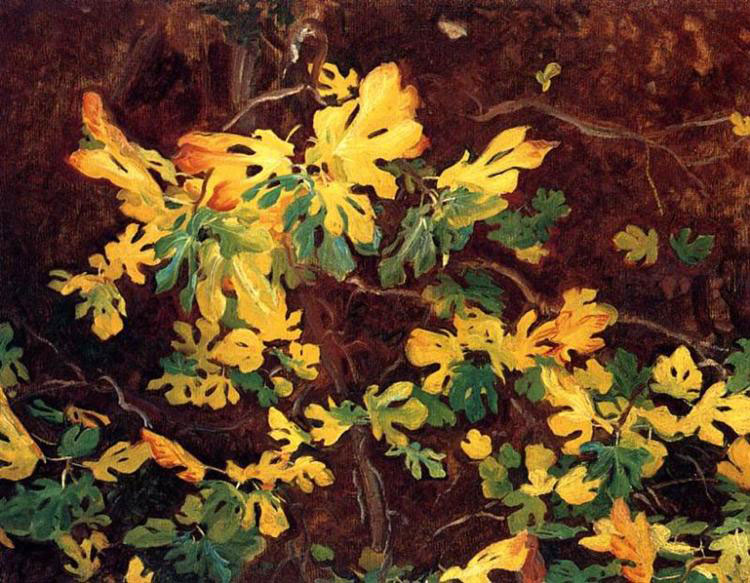
“Study of a Fig Tree”, 1908
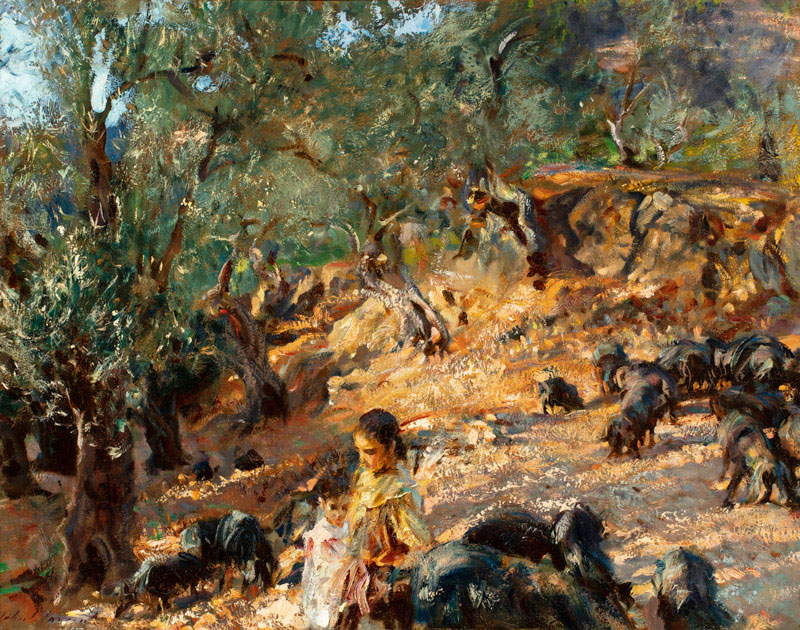
Sargent and Spain:
Fortunately, our friends in Boston have the luxury of viewing Sargent’s work which is permanently on exhibit there.
The famous painting from Spain, “El Jaleo” permanently lives in the Isabella Stewart Gardner Museum. The museum itself is a masterpiece and is well worth the visit on its own account, but it’s hard to beat the experience of walking into the room where the grand-scale “El Jaleo” is solely displayed and it should be on your bucket list.
You can also see the other remarkable Sargent painting inspired by the Spanish painter Velazquez, “The Daughters of Edward Darley Boit” which is on display in the Boston Museum of Fine Art. If you’re planning a Sargent pilgrimage to Boston, don’t forget to add his murals at the Boston Public Library.
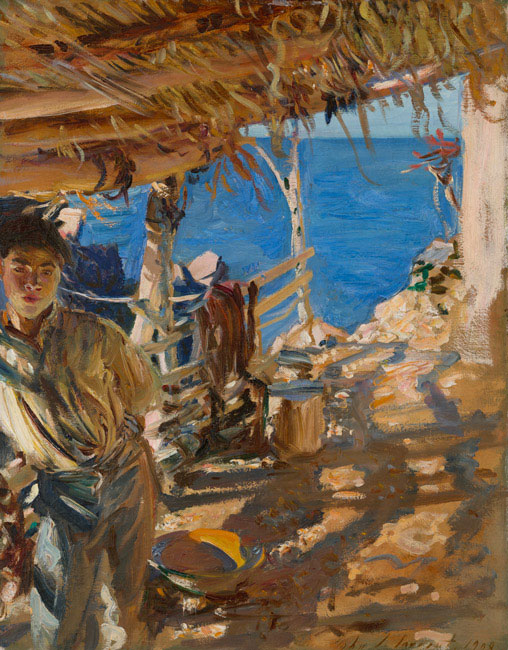
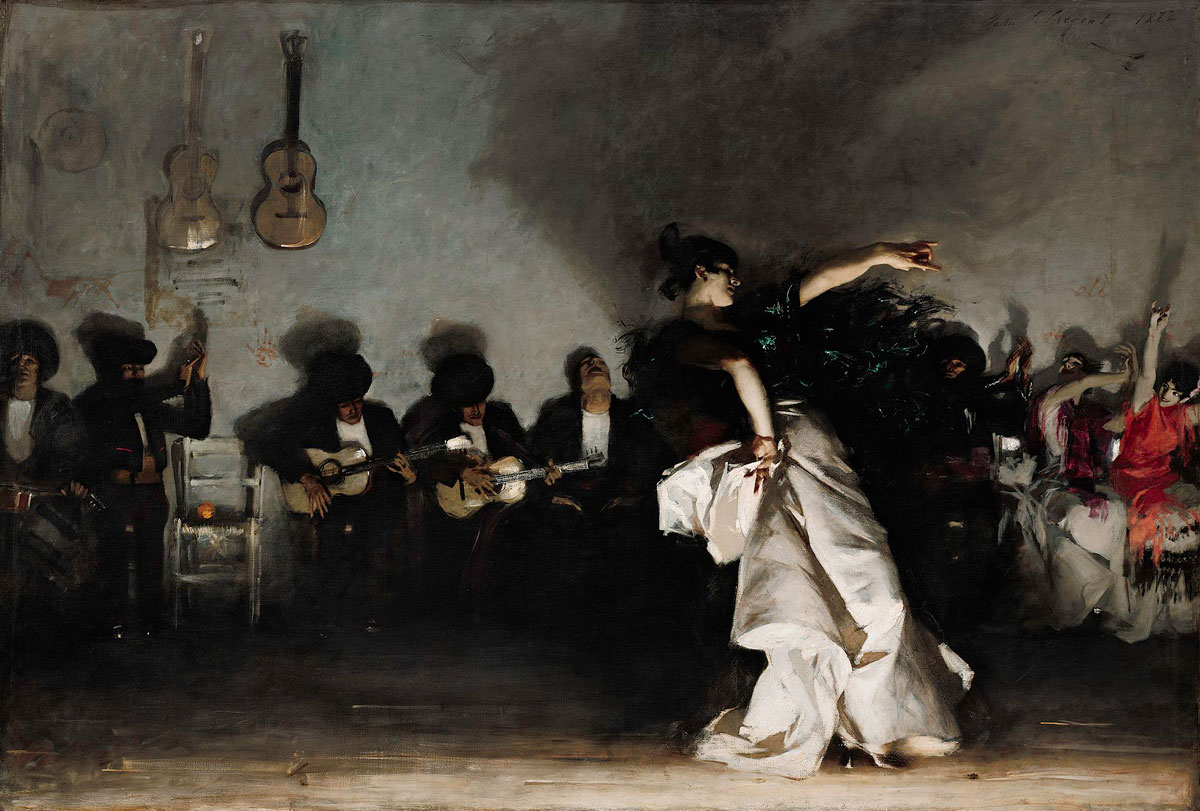
“El Jaleo”, John Singer Sargent, Isabella Stewart Gardner Museum, Oil on Canvas
Unlocking Sargent’s Secrets
Sheer joy and inspiration drips off of these works. It is no wonder that years later artists and admirers are flocking en masse to view the paintings. As a company that makes it our business to travel and paint, we understand the power that comes with a new, inspiring environment.
Sargent returned to Spain many times over his lifetime and we are itching to get back to Provence, Tuscany and Scotland to keep studying and attempting to find great compositions, paint beautiful scenes and just like Sargent, capture the light! We hope to see you on one of our adventures and to our friends who have joined us once, twice or more, we can’t wait to see you again and paint together.
Sargent in Spain Gallery
Blogger: Lauren Carlo
Lauren Carlo is an artist and also the Marketing Director of Workshops In France. She lives in Baltimore, MD, and enjoys traveling, dancing, and rock climbing. You can learn more about her painting on her website or follow her on Instagram: @lauren.carloart.
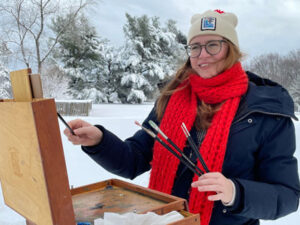
Your Artist Getaway Awaits
Check out more blogs about art workshops, tips and hacks for artists traveling in France and Scotland.
Les Carrières des Lumières Explores Venice 2022
This year at Les Carrières des Lumières, the famous underground quarry is once again transformed into a theater of mind-blowing proportions through the wizardry of technology, showing projected masterworks from Venice as well as the work of Yves Klein in Infinite Blue onto its limestone walls.
Yellow Ochre Lifted from Nature’s Palette
Yellow ochre is a naturally mined pigment used by artists everywhere. One of the must-see villages in Provence is Rousillon, where this multi-hued pigment was mined. You see it as orange, pink, and red on the walls of all houses and the red rock faces for the surrounding hills.
Discovering John Peter Russell: The Lost Impressionist
Why is it that John Peter Russell is known as Australia’s lost Impressionist? Despite being a gifted painter who landed in Paris at the center of the Impressionist movement today he remains virtually unknown. He was well connected with friends like Monet, Van Gogh, Rodin and more

